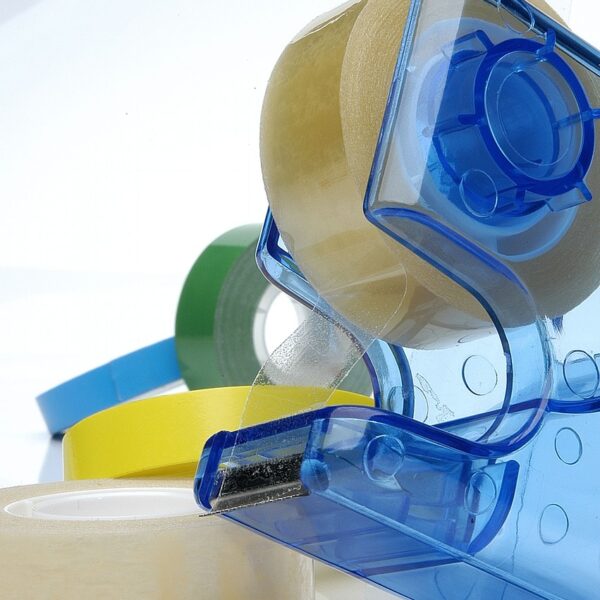Adhesives and tapes: makes the world stick together
Adhesives and tapes nowadays are ubiquitous, easy-to-get, and very handy products. It’s hard to imagine the world without adhesive and tape. One of the Discovery Channel programs, Myth busters, even produced a series of episodes called, “Duct Tape Island Survival“. The goals of the episode were to see if duct tape can allow the testers to survive on a desert island. And they did approve the tape can be used for making clothes, building a shelter and a fire, and finding water and food.

Although the episode is exaggerated, it also shows the convenience of adhesive and tape in life. From people’s daily life, and transportation to high-tech electronic products, and even the aerospace industry, adhesives and tapes are almost everywhere and play very important roles in our lives. All kinds of adhesives and tapes have become important inventions and indispensable supplies in human history.
When we talk about adhesive tapes, self-adhesive labels, and pressure-sensitive adhesive series tapes are discussed. Tapes are made of various types of adhesives coated on various types of substrates, such as paper, PVC, OPP, PET, foam, tissue, aluminum, etc. Therefore, if we want to talk about the history of adhesive tape, we have to start with the evolution of adhesive and substrate.
In 4000 B.C. ancient people used the sap of trees as an adhesive substance to mend earthenware pots. The earliest written records of adhesives tracking back to 2000 B.C. describe simple steps for how to prepare the fish glue.
1500-1000 B.C. Egyptian hieroglyphics records show that Egypt people used glues made with animal-derived adhesives for bonding and laminating. The Romans and Greeks invented different kinds of glues made from a variety of materials including egg whites, blood, bones, hide, milk, and vegetable matter. In 618-906 B.C., Chinese people utilized fish, ox, and stag horn material to make glues. The best glue was made from the bladder of the sturgeon and is called isinglass.
The first patent for an adhesive was issued in 1750 in Britain for a fish-based glue and led to the opening of the first commercial glue factory in Holland.
In 1845, the very first tape idea was invented and appeared and so the history of adhesive tape started. A surgeon named Dr. Horace Day made the first crude surgical tape by combining India rubber, pine gum, turpentine, litharge (a yellow lead oxide), and turpentine extract of cayenne pepper and applying that mixture to strips of fabric. It was the first “rubber-based” adhesive and Dr. Day used it in his practice as a surgical plaster.
In 1882, a pharmacist, Beiersdorf, modified the irritating medical tape with zinc oxide powder mixed with wound paste to make a renovated non-irritating surgical tape.
In 1921 Earle Dickson from Johnson and Johnson invented the prototype of a band-aid with cotton yarn and cloth tape.
In 1925, cloth tape has become popular, and Richard Drew from 3M company first invented masking tape for Automobile factory painters to make clean dividing lines on two-color paint jobs.
In 1930, Richard Drew invented another product, cellophane scotch tape, with transparent film and adhesive on it. So the “Scotch tape” name was born and became famous after.
During the same period in the 1930s, R. Stanton Avery masses produced the first self-adhesive label paper and started to appear in the market changing the development of label paper forever.
In 1942, Johnson & Johnson invented waterproof duct tape which could seal considers and repair equipment, so the duct tapes shine in World War II. Duct tape became a common name for adhesive tape.
In 1946, 3M introduces the now widely used PVC electrical tape.
Thanks to those pioneers who invented adhesives and tapes, there are many functional tapes and adhesives now being invented and produced, and applied in our daily life.
